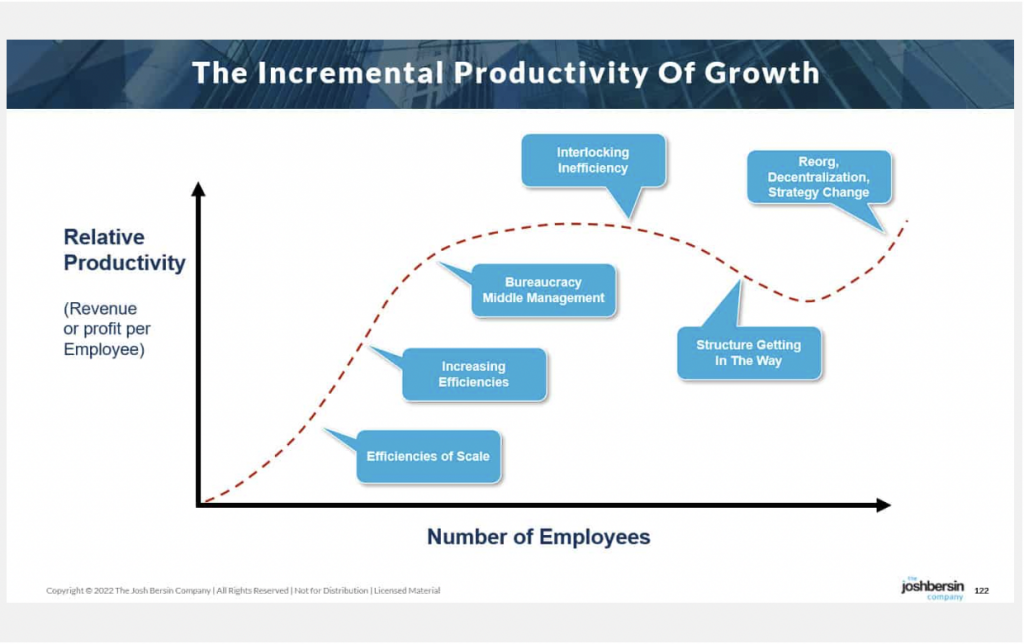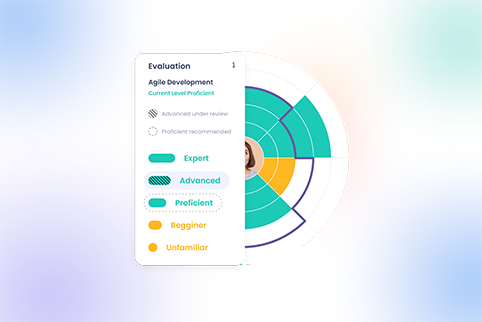How to Increase Productivity in the Workplace amid a Pending Recession
7 min read

How to increase productivity in the workplace? Which are the best ways to address employee output and performance? As we are confronting with a period of economic downturn, with financial resources and budgets becoming tighter and tighter, these open questions are probably already on the agenda of your organization.
And this is not just our guess. According to the latest data from the Achievers Workforce Institute, 33% of the 1400 HR leaders questioned have as main focus initiatives to improve productivity to prepare for a possible recession.
Even though workplace productivity has been a constant preoccupation over the years, most companies somehow fail to spot the right opportunities to boost productivity. Despite the difficult nature of defining and measuring the key factors that impact productivity, one remark from an article by Daniel Markovitz caught our attention. All the productivity hacks and approaches don’t have the expected outcome since they fail to account for a simple fact:
“Most people don’t work in isolation. They work in complex organizations defined by interdependencies among people — and it’s often these interdependencies that have the greatest effect on personal productivity.”
Starting with this point in mind when looking at how to increase productivity in the workplace, our first suggestion would be to broaden the context. Let’s explore together what this means.
Start with process optimization and use technology to increase efficiency at a rapid pace
At this moment, there are tools for every department and process that can decrease workloads and save precious time. You are probably familiar by now with different project management software and group chat applications that ensure your employees stay in the loop and enhance team collaboration. Asana, Trello, or Slack are just some examples of tools used to streamline workflows and boost communication.
On the other hand, you should also look for opportunities to automate repetitive tasks that usually don’t bring any satisfaction to your employees but rather administrative overload and potential errors.
When it comes to the HR department, tools for performance management are most often recognized for having an impact on productivity. Platforms like Nestor help your teams stay on the right track by nurturing transparency, collaboration, and alignment. Individual contributors and teams can constantly track progress toward their goals and thus stay focused and productive.
Continue with an organizational redesign
The next thing you can do to solve the “how to increase productivity in the workplace” puzzle is to take a closer look at the organizational design and find ways to optimize the structure. By structure, we mean job roles, reporting hierarchy, or business operating models.
For a more practical approach, we recommend one of Josh Bersin’s articles: “Understanding The Tech Layoffs. Could They Have Been Prevented?”, in which he describes workplace productivity as an issue closely related to the growth cycle of a business.

As exemplified in the chart above, Josh Bersin explains that in the growth stage, each employee increases efficiency and becomes fully productive after 3 to 6 months. But as the organization grows and adds new layers of management, procedures, and bureaucracy, productivity per employee starts to lag. Moreover, the company ends up with employees filling in duplicate roles.
What’s the lesson we should all keep in mind? For each stage of growth, try to determine if a particular job is necessary and how it impacts overall productivity at the team level:
- Can you find any alternatives?
- Are newer operating models like shared services, self-service models, or outsourcing possible solutions?
You can find the right answers for your organization too. Just keep asking yourself: are you becoming more productive or less?
And now it’s all about your employees’ productivity at an individual level
In order to maximize productivity at the employee level, we recommend taking the next steps:
Make work visible to everyone and align on what matters.
Sometimes, people’s tasks and daily activities are not visible to other peers or at the organizational level or are not linked to bigger objectives. This lack of transparency might lead to overload situations, people working on the same activities, or losing focus on what’s important — all relevant factors when trying to figure out how to increase productivity in the workplace. Modern platforms for performance management based on OKRs alongside task management applications that foster alignment, transparency, and collaboration might be the right solution.
This is why we suggest setting up clear objectives inside a team and connecting managers with their teams through regular check-ins to ensure clarity and alignment from the very beginning. Measure the progress toward your desired outcome and have ongoing discussions with your peers to identify blockers or improvements in a timely manner. And don’t forget to split your initiatives into smaller tasks and follow up on their status.
These practices are strong drivers for a results-oriented culture, organized work, and higher productivity.
Ensure manager effectiveness is where it should be.
Managers’ effectiveness goes hand in hand with the upper step. We cannot stress enough managers’ role to guide and support their teams toward the desired outcomes in terms of performance and productivity.
Managers are the ones who have to clarify expectations. Once the expectations are clear, empower your employees with the autonomy they need and allow them to make their own decisions. This will help them feel more in control of their work, which can lead to increased engagement and productivity.
Additionally, make sure to provide employees with regular feedback and recognition for their efforts, as this can help to further motivate them and make them feel appreciated. Natural leadership that can inspire and help employees overcome roadblocks and also celebrate achievements is not just a nice to have. Recent studies show that employees who would recommend their managers are 2.1 times more likely to be highly productive at work.
Focus on enhancing your people's capabilities.
Investing in development opportunities for your employees is a great way to help them stay productive and for your company to remain competitive in the market. Moreover, according to the latest McKinsey report launched on February 2, some companies that prioritize developing their employees manage to deliver top-tier profitability at the same time. “These companies are more likely to become large-scale “superstars.”
Not to mention that companies cannot afford to maintain employees with obsolete skills, but on the contrary, should support people to stay up to date with the latest industry trends and knowledge. A potential mismatch between skills and the expectations of a job role can influence an employee’s achievements and the company’s overall productivity.
Additionally, supporting your employees with the right development opportunities according to their desire and needs means also maximizing their talent and skills in the best interest of your organization.
Final Thoughts
With this being said, we think seeking answers to questions like “how to increase productivity in the workplace?” are a natural pursuit and the efforts are worthwhile. However, it’s important to realize you can’t achieve higher productivity without considering a wider range of actions, which go beyond individual employee productivity and have an impact at the larger organizational level.







